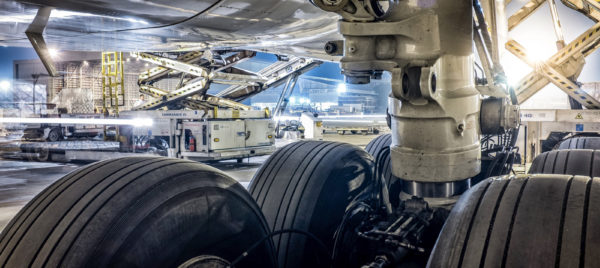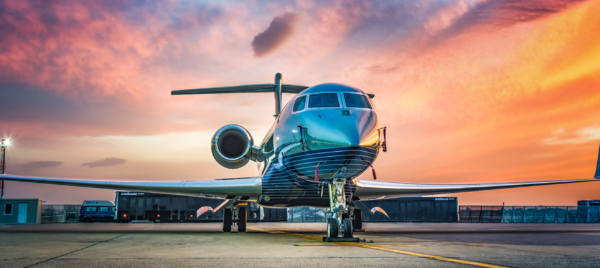MRO Management December 2013
Stop Go: Download a full PDF of the article
Wheels and Brakes are a small but important part of the MRO market. George Marsh talks to one of the specialists in the business.
Overall, there is considerable opportunity for parts of the MRO supply chain that are willing to focus on the wheels and brakes sector of the component aftermarket. In particular, a number of independent MROs have been formed to do just that. Additionally, even modestly sized players have shown their ability to survive and thrive, despite determined market penetration by the OEMs, which are no less active in the wheels, tyres and brakes sector than they are in the rest of the aviation market.
Examples of independents that are showing how it can be done include the likes of World Aero and Rotables Repair Ltd in the UK. Philip Randell, an EASA licensed aircraft engineer, formed World Aero in 1999. Since 2008 it has specialised specifically in the service, repair and overhaul of aircraft wheels and brakes. Today, he is delighted to be part of this growing MRO sector and is seeing the benefits of the move reflected in business opportunities and contacts.
Initially, Randell and his team worked mainly on wheels in a 2,500ft2 Part 145-approved facility in Sussex, UK. Brakes, both steel and carbon, came later. Recently, all wheels and brakes activity moved to a new 11,000ft2 facility that was opened in 2011. By deliberately focusing on Airbus A320 and Boeing 737 NG (plus some Classic) workhorses World Aero could ensure significant shop throughput. That being said, the company also works on other types, ranging from Learjet corporate aircraft and EMBRAER 170/190 regionals at one end of the spectrum to heavyweights like the Airbus A340-600, whose wheels and brakes are on a par with those of the Airbus A380, at the other. Altogether the shop handles up to 3,000 units per year, with 92% of the work being full overhaul.
Randell has never stinted on the investment required to achieve a high level of service. As well as ensuring modern, spacious working premises, World Aero has equipped its shops with the latest in efficient tooling machines and IT. This has enabled it to arrange its workforce around a limited number of core individuals which are supplemented with sub-contract resources as required. As a result, the company can provide quality service with reasonable turnaround times at competitive cost.
Randell and marketing executive Emma Brown are realistic about their target market. Catering for operators of large fleets is best left, they concede, to the OEMs, which prefer, and are geared up for business at that level. “We see opportunities for smaller contracts that a large OEM might not find viable,” Brown explains, “working for dealers, distributors and some small airlines, especially those with dispersed line stations. We can be flexible and accommodate a wider range of requirements than the OEMs do. We rely on this in combination with our high standards of service and our incredible attention to detail in order to win, and keep, business.”
The possibility of exchange is also an important part of the business model and a large range of stock is carried to back this aspect of service. “Historically, exchange for wheel and brake products has not suited everybody. Certain operators who fear that exchange units might have been overhauled to within an inch of their lives still prefer to have their own serial numbers back after overhaul. However, clients tend to warm to the exchange possibility as they become experienced with receiving a consistently honest and quality product from us, “Randell tells MRO Management.
Contracts available to clients range from basic per-job ad-hoc time and materials, through to arrangements offering budget predictability, such as flat-rate repair and overhaul with exchange. Although wheels are maintained on condition, overhauls typically take place after every fifth or sixth tyre change. However, as Randell points out, some operators fail to keep track and simply keep changing their tyres time after time without attending to the wheels. A few send wheels in for attention only when there is obvious corrosion, incipient cracking or other degradation. Sometimes those wheels can be re-blended, machined and generally renovated, but too often they have to be scrapped due to deterioration beyond the manufacturers’ stated limits.
Tyre life is variable. As a typical example, a tyre will survive about 115 cycles on a 737NG nose wheel and 250 cycles on the main wheels. If it is well maintained, a wheel can last for 15-20 years, or 100,000 cycles, so regular wheel inspections and associated repair and overhaul attention are highly recommended.
Another way an independent MRO may survive in the face of OEM encroachment is to form a working relationship, even to the extent of a partnership, with one of the principal OEMs. However, there is an element of risk attached to this strategy- as aligning with one OEM may alienate others, to the detriment of the independent MRO’s work orders.
Randell notes that brake OEMs are in a particularly strong position due to the high costs of the consumable elements, particularly on carbon brakes. For example, he declares in a $40,000 repair task the labour content can be as low as a few percent, so any advantage the maintainer may have over the OEM in terms of labour costs has minimal effect. Furthermore, OEMs, are apt to charge independents full list prices for replacements and may quote long order lead times.
A further attribute that today’s clients expect is global reach. Despite it being a relatively small company, World Aero lives up to its name, receiving order from all over the world, catering for operators up to eight hours flying time away – as far as the Caribbean one way and parts of Asia the other. Thanks to the internet and global logistical reach, plus the international mindset of the aviation community, business is truly trans-regional.
For the future, the company is anticipating further moves towards newer technologies-including carbon brakes, radial tyres, improved on-wing troubleshooting, electronic control and monitoring, boltless wheels and the like. As well as normal maintenance, there will also be opportunities associated with retrofitting these technologies. Meanwhile, even whilst ensuring that the necessary future investment is made, Randell is confident that his business model of achieving high competence in this particular niche will be rewarded by continued growth in the near to medium term.



